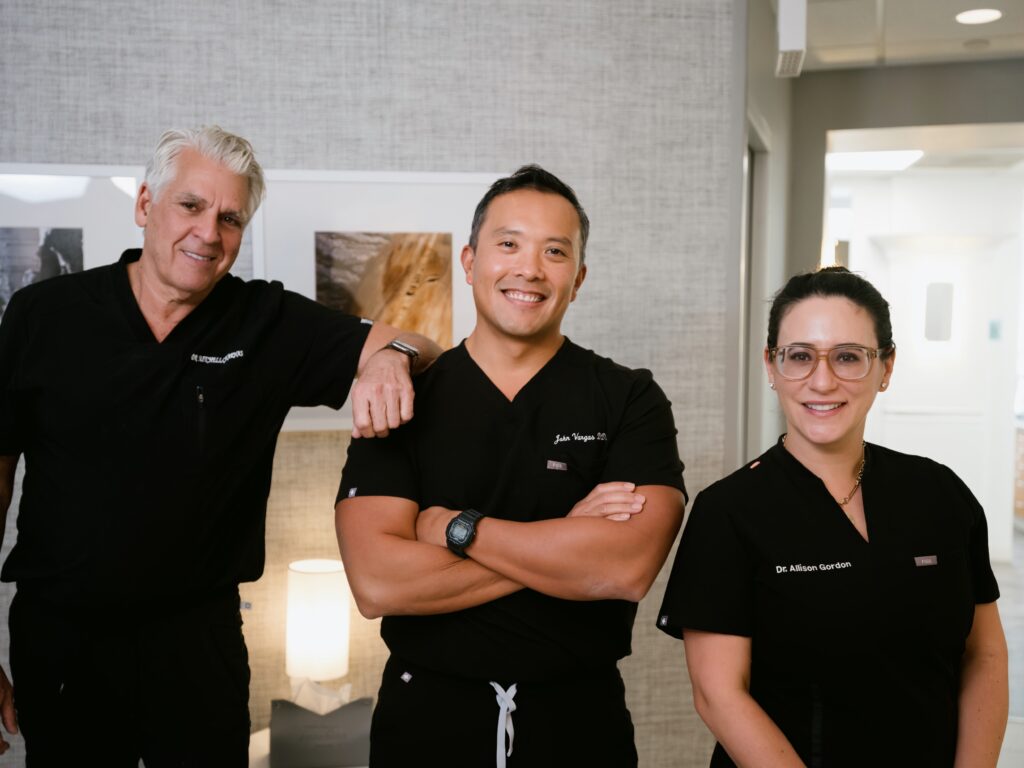Choosing the right orthodontic treatment can transform your smile—and your confidence. Both Invisalign® and traditional braces deliver excellent results, but each has unique advantages that may suit different needs. Read on to see the differences and discover which option might be best for you!
Materials & How They Work 🔍
Invisalign®
- Materials: Made of smooth, clear, medical-grade plastic 😎
- How It Works:
- Uses a series of custom-made aligners that gradually shift your teeth into place.
- Each aligner is slightly different, applying gentle pressure with only minor discomfort during transitions.
Traditional Braces
- Materials: Typically constructed from sturdy metal alloys; ceramic or tooth-colored options are also available for a more discreet look 🔩
- How It Works:
- Metal brackets are bonded to each tooth, and a metal archwire (held in place with elastic bands) connects them.
- Adjustments to the archwire help move your teeth into alignment, which can sometimes cause discomfort.
Comfort, Discretion, & Treatment Time 😊
Comfort
- Invisalign®: Custom-fit aligners are smooth and cause less irritation.
- Braces: Metal brackets and wires can sometimes create sore spots on your gums and cheeks.
Discretion
- Invisalign®: Nearly invisible—most people won’t notice you’re undergoing treatment 👀
- Braces: While traditional metal braces are more noticeable, ceramic options help reduce visibility (often at a higher cost).
Treatment Time
- Invisalign®: Often achieves results in 12 to 18 months for mild to moderate cases.
- Braces: Treatment may extend up to three years depending on the complexity.
Cost & Long-Term Results 💰
- Cost: Invisalign® and traditional braces are generally comparable, although Invisalign® might carry a slight premium.
- Long-Term Results: Both options provide permanent results if you diligently wear your orthodontic retainer after treatment. Failing to wear your retainer can compromise the outcome.
Care & Maintenance 🪥
- Invisalign®:
- Removable for eating, brushing, and flossing – making daily care easier.
- However, consistency is key: you must wear the aligners 20-22 hours a day.
- Braces:
- Fixed appliances require extra effort in maintaining oral hygiene, which can be challenging without specialized cleaning tools.
Who Benefits Most? 🤔
Invisalign® is Ideal For:
- Older teens and adults with mild to moderate orthodontic issues (e.g., crooked, crowded, or spaced teeth).
- Patients who prefer a discreet, comfortable treatment option and the convenience of removable aligners.
Traditional Braces Are Best For:
- Children and adolescents with more complex orthodontic needs.
- Cases involving severe bite issues or jaw misalignment.
- Patients with habits like teeth grinding (bruxism), which can damage aligners.
Frequently Asked Questions About Invisalign® ❓
Do you need to wear Invisalign® while you sleep?
Yes, you must wear your aligners for at least 22 hours daily, including during sleep, to achieve optimal results.
Do I need impressions for Invisalign®?
The process is mostly digital! We use the iTero intraoral scanner to create accurate 3D scans of your teeth, which are then used to design your series of custom aligners.
Making Your Decision 💡
Both Invisalign® and traditional braces are effective orthodontic treatments. The choice ultimately depends on your specific dental needs, lifestyle, and personal preferences. At Manhattan Dental Spa, our experienced team is here to help you decide which option is best for you.
📞 Call 212-683-2530 to schedule a consultation and let us guide you toward the right treatment for your smile transformation!



